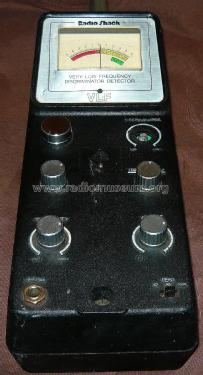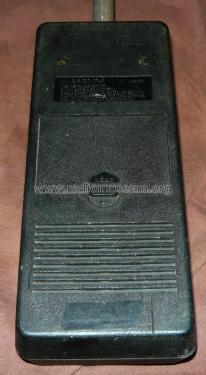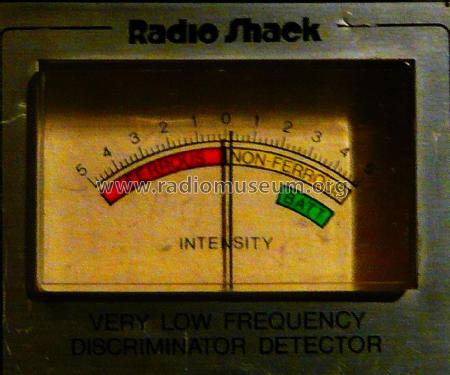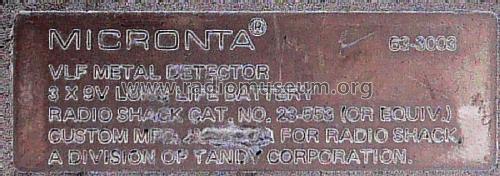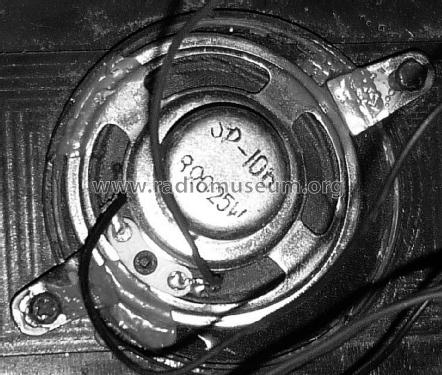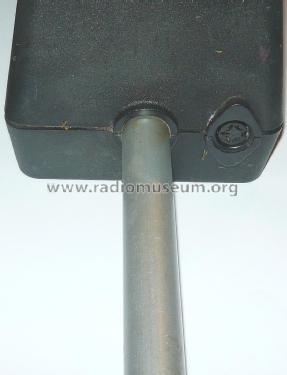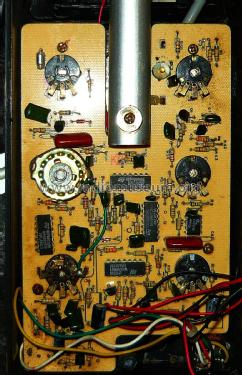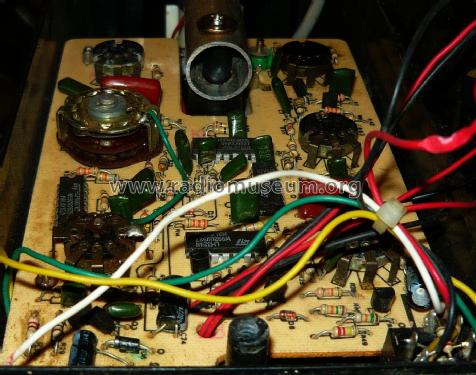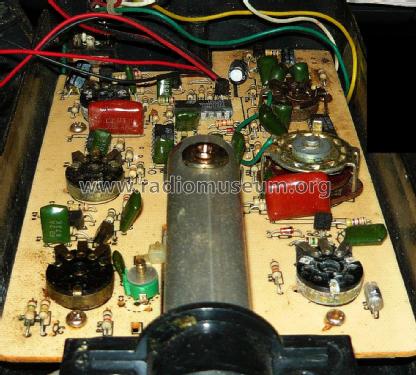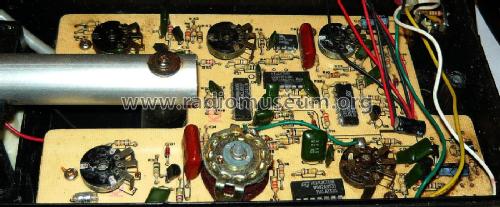Very Low Frequency Discriminator Detector MICRONTA 63-3003
Radio Shack (Tandy, Realistic, Micronta); USA
- Land
- USA
- Hersteller / Marke
- Radio Shack (Tandy, Realistic, Micronta); USA
- Jahr
- 1980 ??
- Kategorie
- Diverses (Sonstiges) - siehe Bemerkungen
- Radiomuseum.org ID
- 285980
- Anzahl Transistoren
- 7
- Halbleiter
- Hauptprinzip
- Detektor mit Verstärker
- Wellenbereiche
- Wellen in den Bemerkungen.
- Betriebsart / Volt
- Trockenbatterien / 3 x 9 Volt
- Lautsprecher
- Dynamischer LS, keine Erregerspule (permanentdynamisch) / Ø 5 cm = 2 inch
- Material
- Plastikgehäuse (nicht Bakelit), Thermoplast
- von Radiomuseum.org
- Modell: Very Low Frequency Discriminator Detector MICRONTA 63-3003 - Radio Shack Tandy, Realistic,
- Form
- Reisegerät > 20 cm (netzunabhängig betreibbar)
- Abmessungen (BHT)
- 112 x 260 x 80 mm / 4.4 x 10.2 x 3.1 inch
- Bemerkung
-
Band : 3 kHz - 30 kHz ( VLF )
Very low frequency (VLF), also known as induction balance, is the most popular detector technology in use today. In a VLF metal detector, there are two distinct coils:
- Transmitter coil - This is the outer coil loop. Within it is a coil of wire.
- Electricity is sent along this wire, first in one direction and then in the other, thousands of times each second. The number of times that the current's direction switches each second establishes the frequency of the unit.
- Receiver coil - This inner coil loop contains another coil of wire. This wire acts as an antenna to pick up and amplify frequencies coming from target objects in the ground.
The current moving through the transmitter coil creates an electromagnetic field. The polarity of the magnetic field is perpendicular to the coil of wire. Each time the current changes direction, the polarity of the magnetic field changes. This means that if the coil of wire is parallel to the ground, the magnetic field is constantly pushing down into the ground and then pulling back out of it.
As the magnetic field pulses back and forth into the ground, it interacts with any conductive objects it encounters, causing them to generate weak magnetic fields of their own. The polarity of the object's magnetic field is directly opposite the transmitter coil's magnetic field. If the transmitter coil's field is pulsing downward, the object's field is pulsing upward.
The receiver coil is completely shielded from the magnetic field generated by the transmitter coil. However, it is not shielded from magnetic fields coming from objects in the ground. Therefore, when the receiver coil passes over an object giving off a magnetic field, a small electric current travels through the coil. This current oscillates at the same frequency as the object's magnetic field. The coil amplifies the frequency and sends it to the control box of the metal detector, where sensors analyze the signal.
The metal detector can determine approximately how deep the object is buried based on the strength of the magnetic field it generates. The closer to the surface an object is, the stronger the magnetic field picked up by the receiver coil and the stronger the electric current generated. The farther below the surface, the weaker the field.
Phase shift provides VLF-based metal detectors with a capability called discrimination. Since most metals vary in both inductance and resistance, a VLF metal detector examines the amount of phase shift, using a pair of electronic circuits called phase demodulators, and compares it with the average for a particular type of metal. The detector then notifies with an audible tone or visual indicator as to what range of metals the object is likely to be in.
This metal detector allows to filter out (discriminate) objects above a certain phase-shift level. Usually, you can set the level of phase shift that is filtered, generally by adjusting a knob that increases or decreases the threshold.
Controls :
Ground, Tune, Sensitivity, Phone, Discriminator, Mode ( TR2,TR1,VLF), Volume,
Test ( 82,81,NOR)
- Nettogewicht
- 0.9 kg / 1 lb 15.7 oz (1.982 lb)
- Autor
- Modellseite von Michael Gnaedig-Fischer angelegt. Siehe bei "Änderungsvorschlag" für weitere Mitarbeit.
- Weitere Modelle
-
Hier finden Sie 1362 Modelle, davon 1249 mit Bildern und 163 mit Schaltbildern.
Alle gelisteten Radios usw. von Radio Shack (Tandy, Realistic, Micronta); USA
Sammlungen
Das Modell Very Low Frequency Discriminator Detector befindet sich in den Sammlungen folgender Mitglieder.
